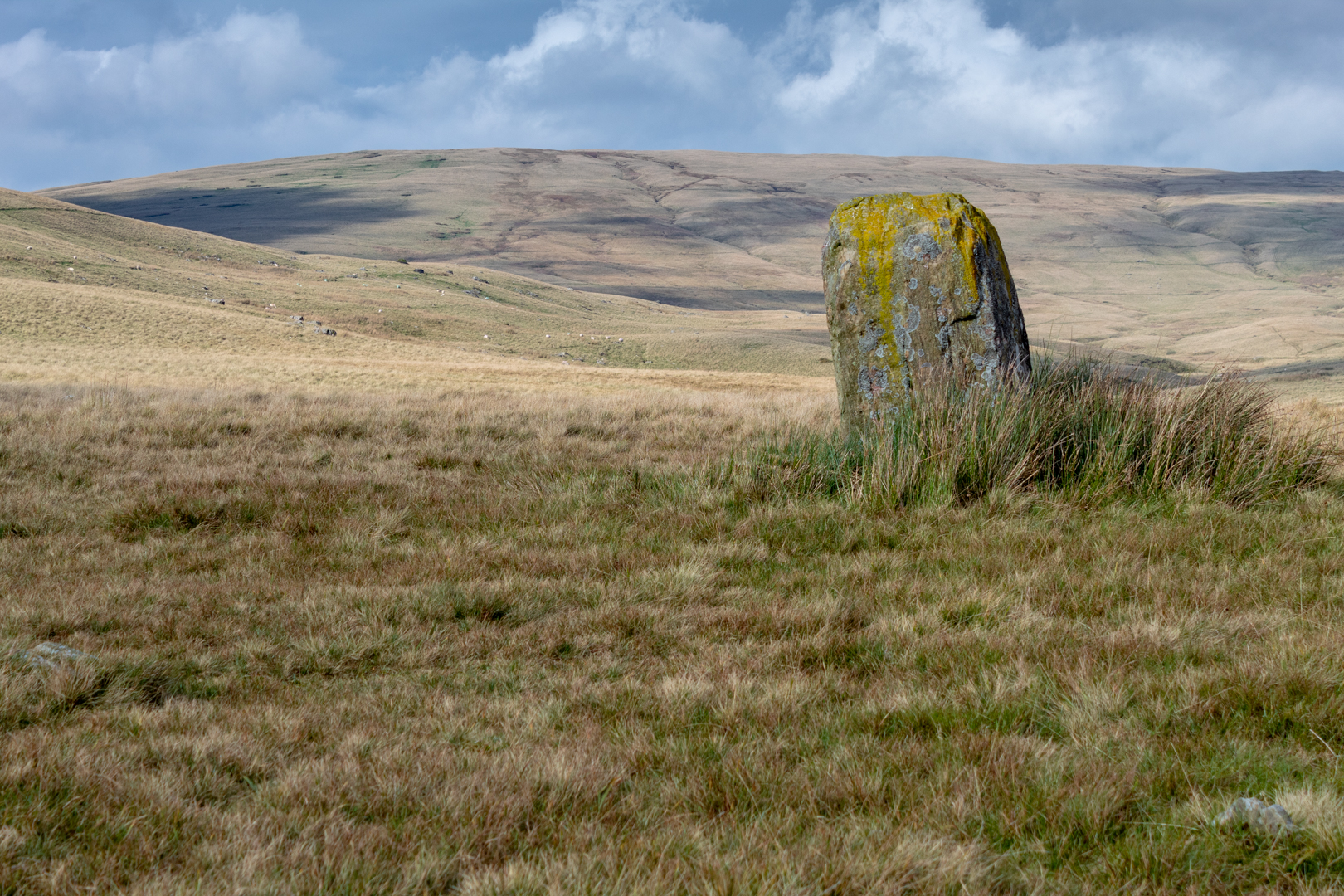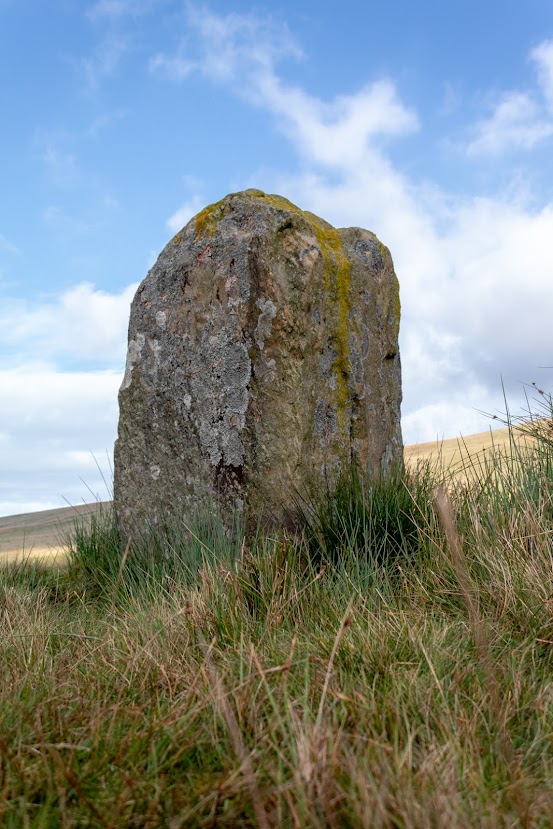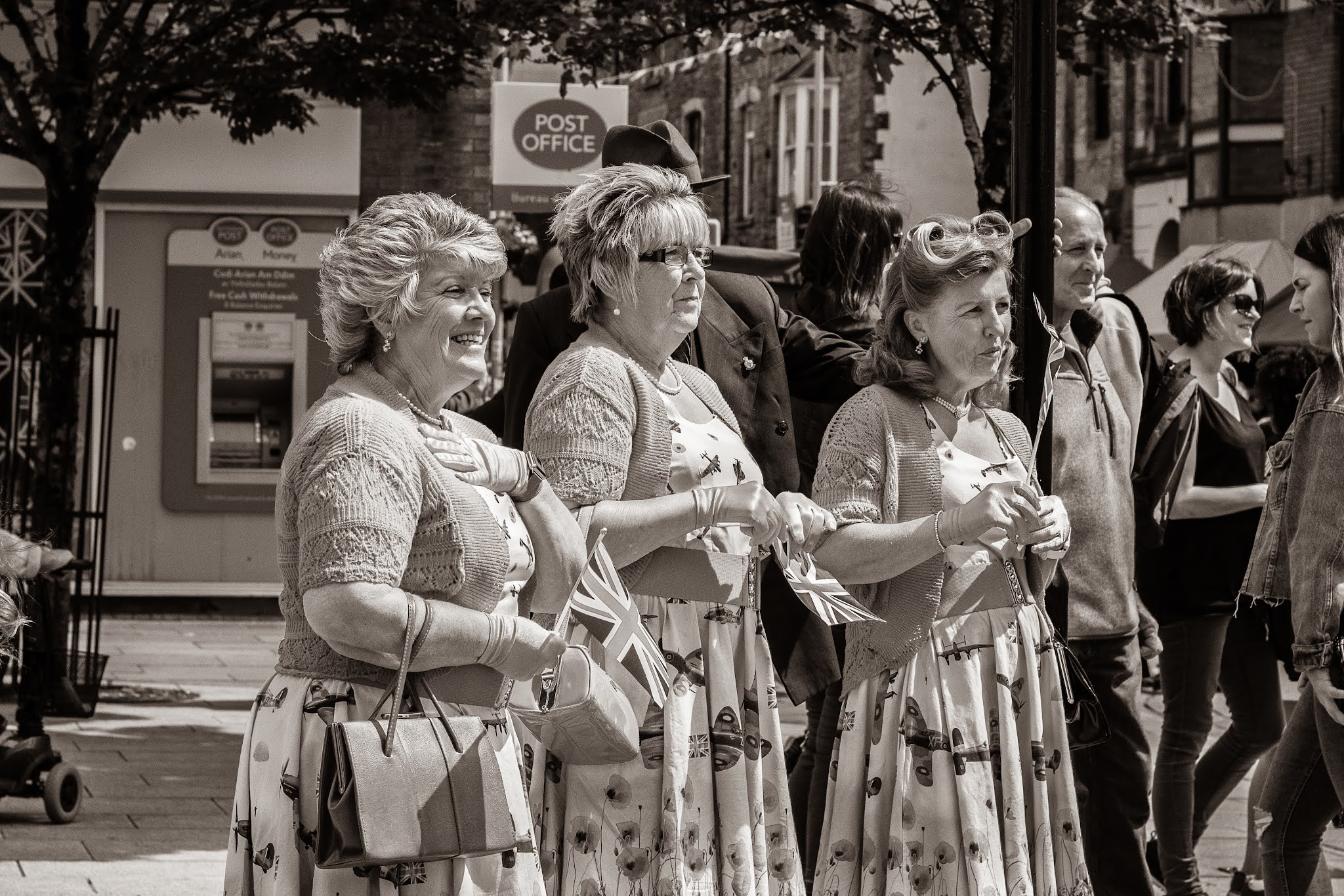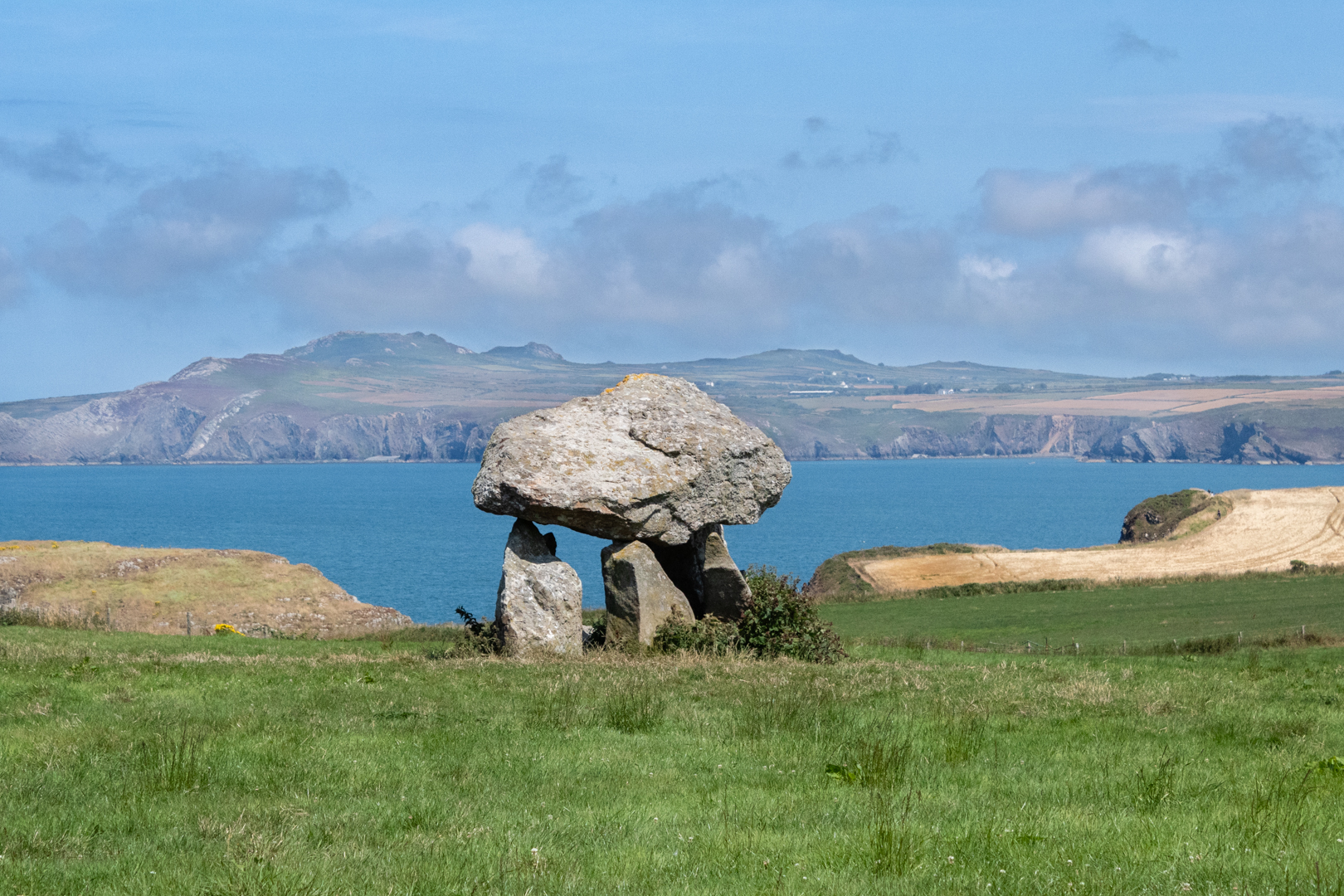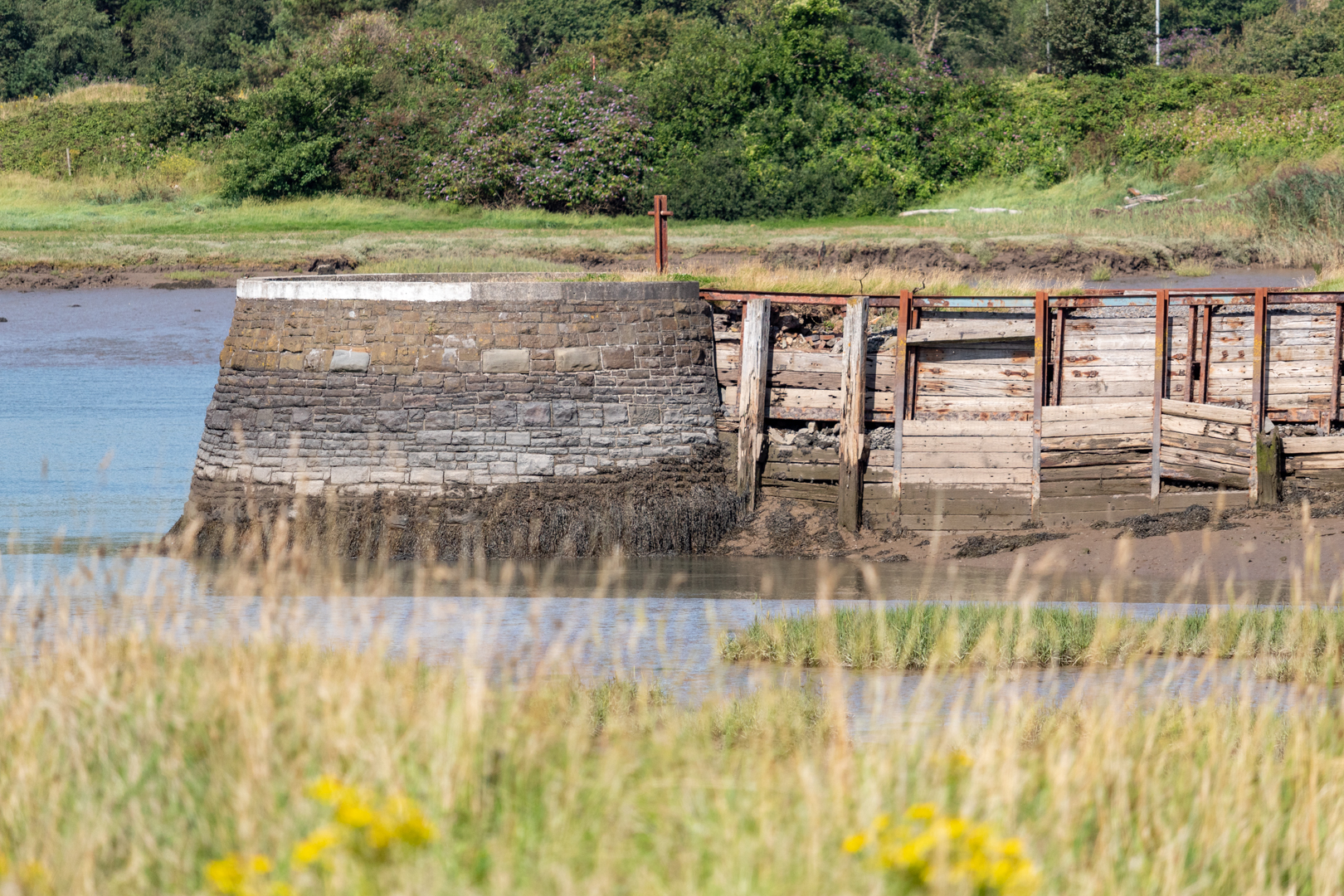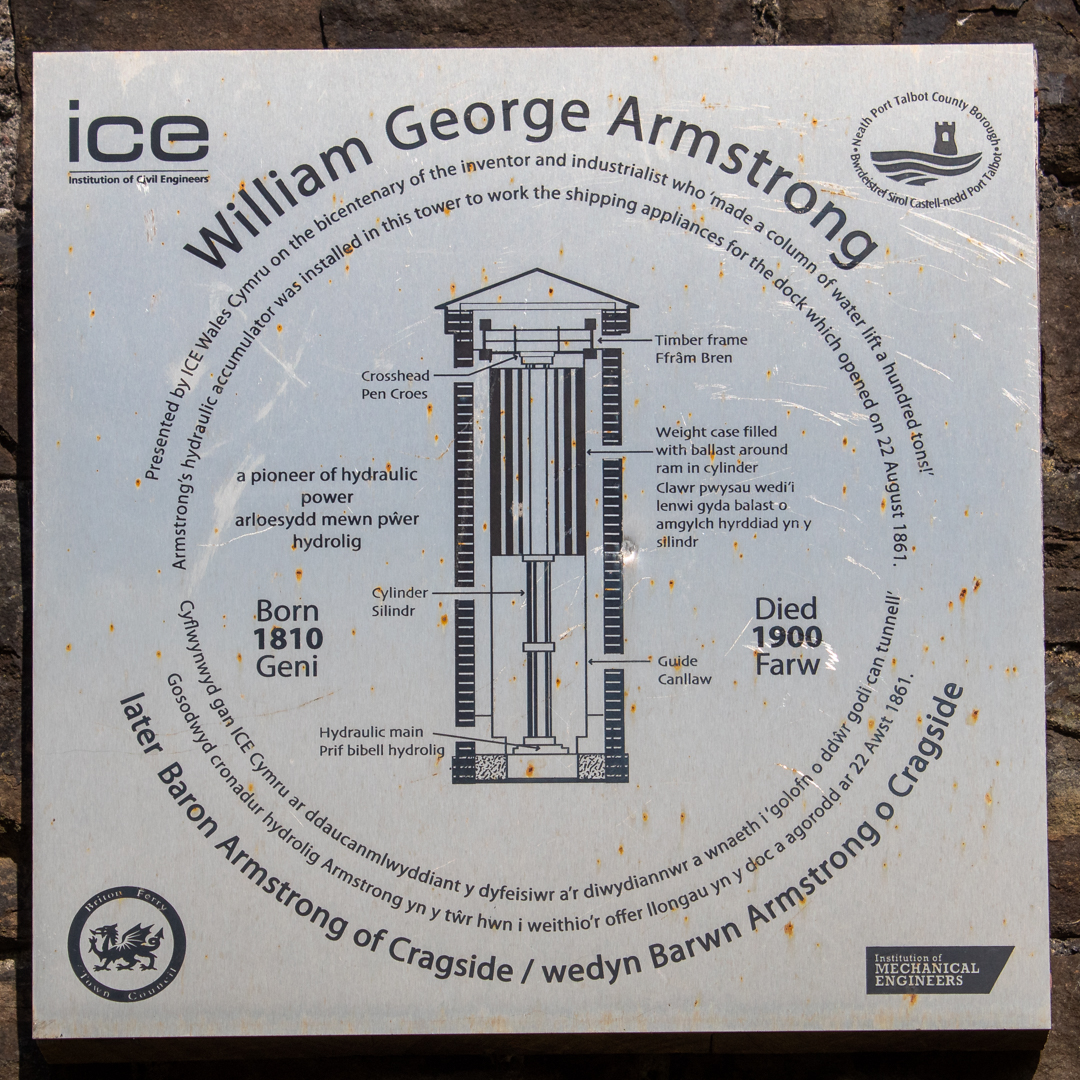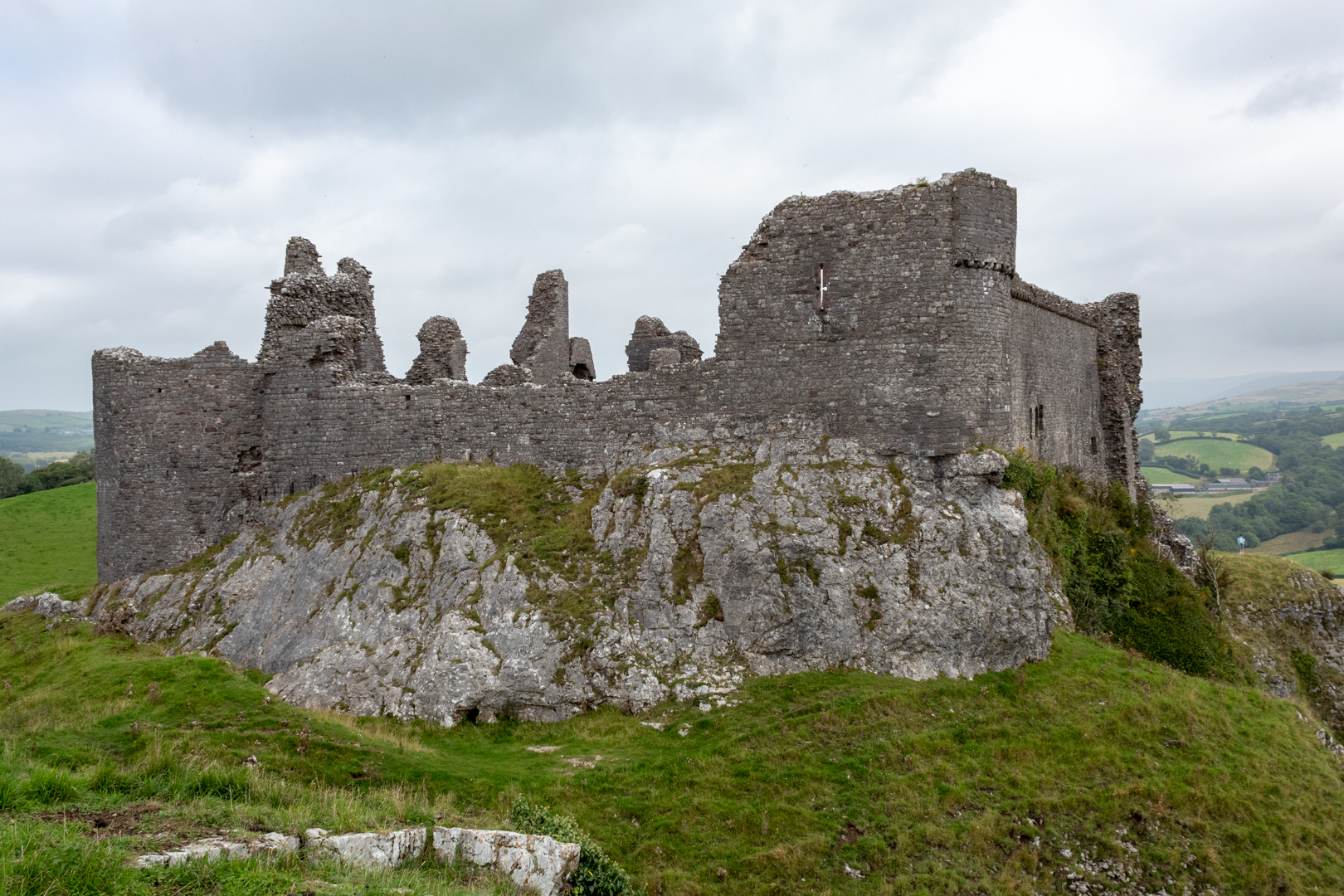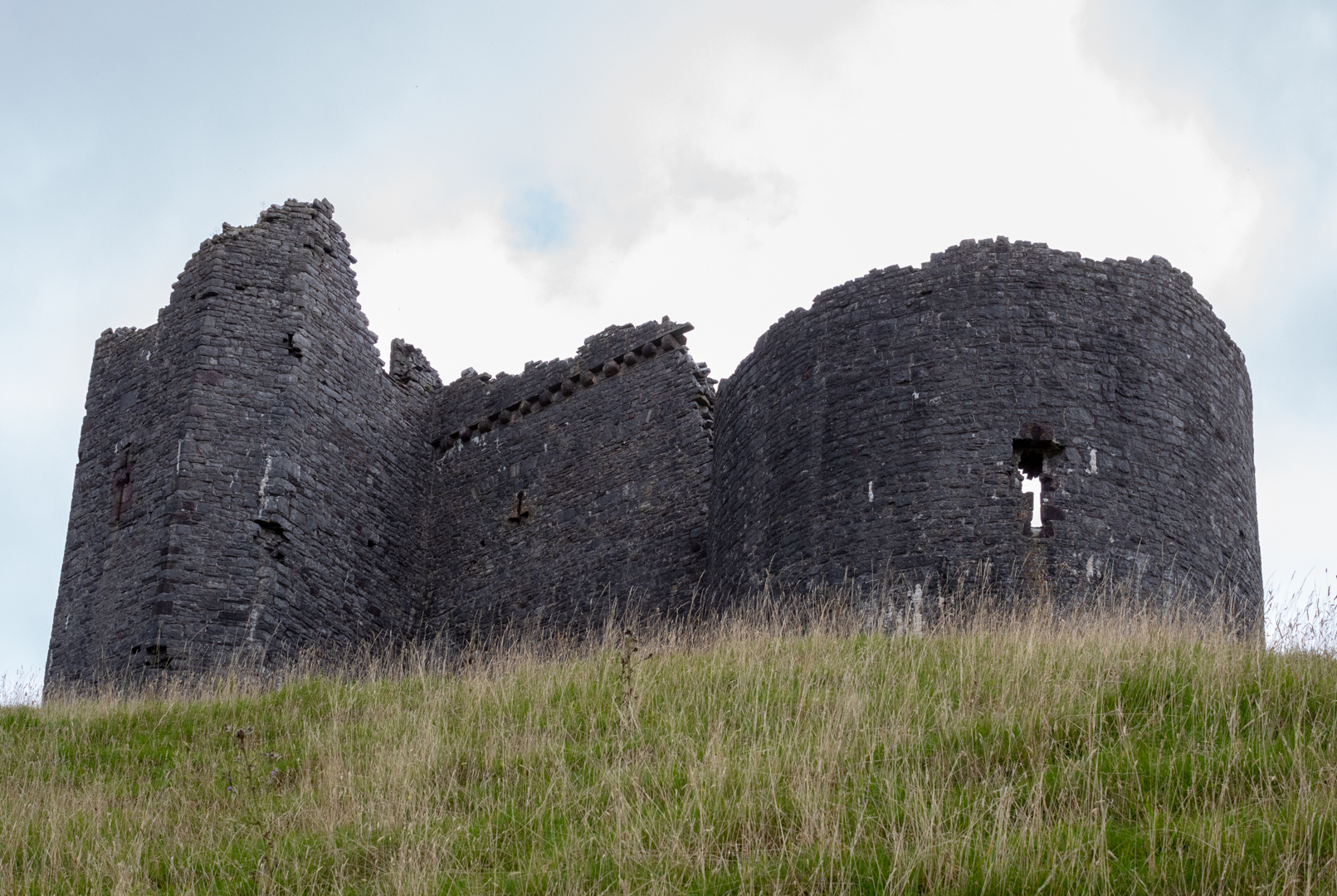Visit Date October 2021.
 |
Another ancient site in south Wales today the site of Cerrig Duon and Maen Mawr.
The actual site is called Cerrig Duon and it consists of a very low stone circle and a standing stone just outside the circle called Maen Mawr, which unimaginatively translates to "Large Stone".
The site of Cerrig Duon (translates to black stones), which probably dates to the Bronze Age (c. 2300 - 800 BC) has also been listed as a stone row and there are two stones outside the circle leading to Maen Mawr and then onto the circle, I am not sure if I would say this was a stone row? however, looking along this line to the south it does seem to line up well with the dip between two mountains to the south and if there was a reason for this I suspect it has been lost in time. Although the circle does not protrude from the ground very much it is a stone circle or perhaps a stone oval would be more correct as it does seem slightly oval in shape.
The stones are all rough slabs of sandstone.
The Stone, Maen Mawr itself is about 7 feet high, nearly 3 feet thick, and about 4 feet wide. The site stands on a flat ridge away from the river in the valley and the views here are magnificent.
There is a theory that the Maen Mawr stone acts as the gnomon of a sundial, casting a shadow aligning with the small stones on midsummer day, I don't really buy into this theory but who knows?
Getting a little higher view makes it easier to see the circle part of this site, but I suspect the vegetation has overgrown too much as early records show as many more with Cadw (the Welsh Government's historic environment service) lists the site as having 20 Stones.
Click on images for full screen view
Footer:
Visit Information:-
Google Reference
51.87248150044887, -3.670084955951269
Google Search reference: Maen Mawr
What Three Words reference : ///skipped.prime.punctuate
Additional information
Visiting this site is quite easy as the main stone can be spotted from the road. Going north on the A4067 the left turn is a little over a kilometre past the Dan-Yr-Ogof visitors centre and just beyond the
Tafarn-y-Garreg Pub.
Once going north it is more difficult to spot but driving south it come into site on the right hand side over the other side of the river.
There are small pull ins along the road and although you will have to cross the river this is easily done.
The circle being low to the ground can not be seen from the road.
